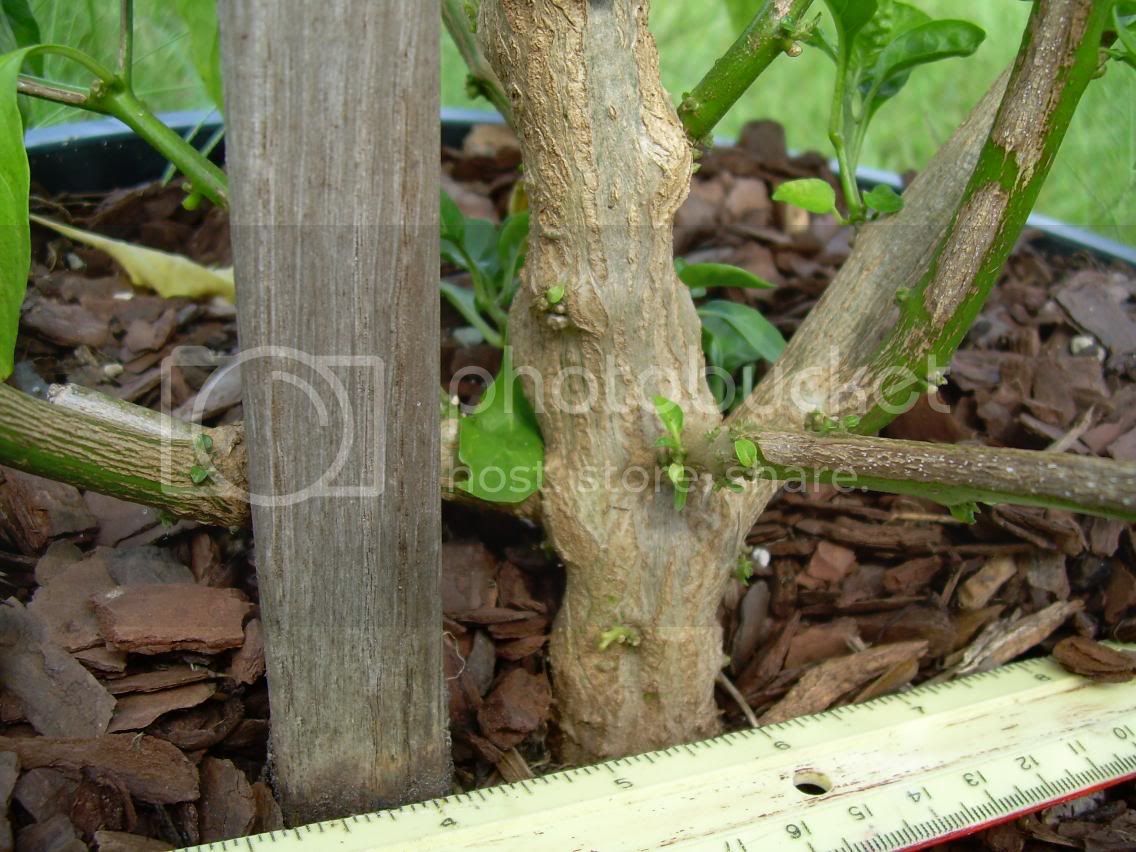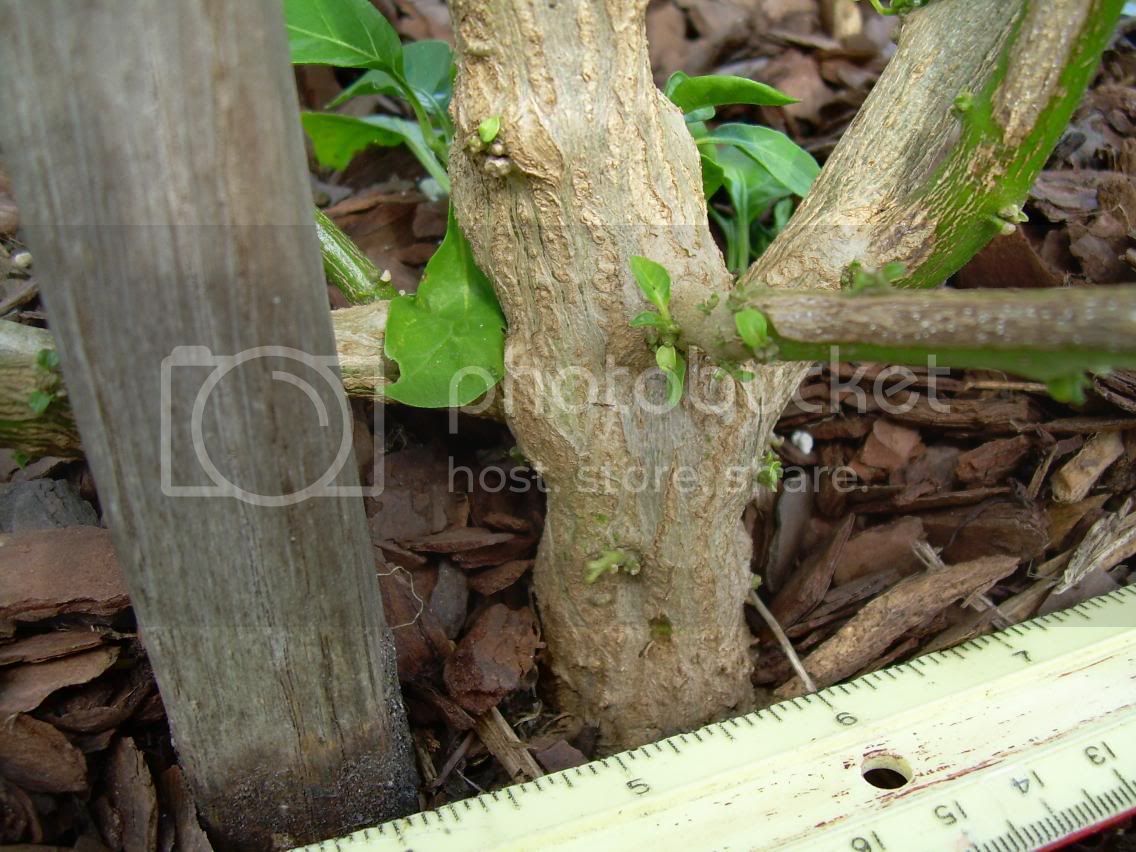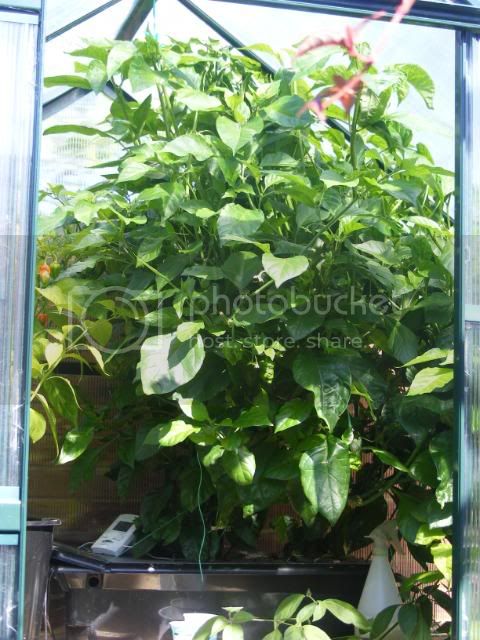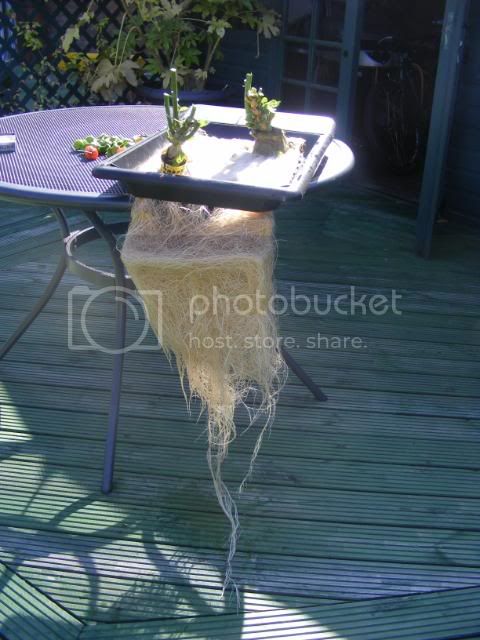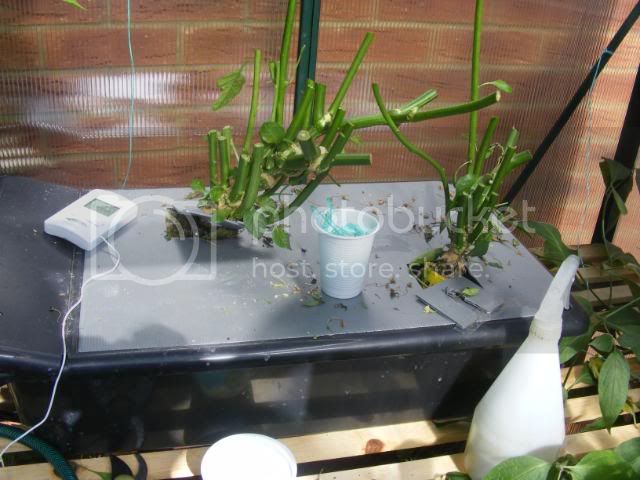Big Subject, I know. But a very interesting Thread, Yes?
Maybe the Best Growers can pitch in with their Best Rules, all in one place.
My personal Bias is Total Organic. What is yours?
Let us help each other with some Key Questions; Maybe you have others.
1) In the Perfect Environment (85f / 30c Mini Greenhouse) do the 1st Sprouts turn out to be the Strongest Plants?
1b) When is it time to toss the Runt Sprouts? Seedlings, or Plants?
2) Is it better to baby the new plants in Shade to grow Short plants with thick Core & Wide Leaves - or - get them in Sun with Small Leaves right away?
3) Transplant in Small Pots or Large Pots, and When?
4) Feeding - oh gosh - I only feed Organic -- but when? and how much?
4b) Hydro? OY
5) Water - When and How Much?
6) Light, Heat, Cold, Country
7) Flowers & Fruit - Nutrition & Flower Drop
8) Harvest - Date of Season, Color of Pod, Environment
Again, very Big Subject
Here are my own Growing Rules:
I am totally Organic, and I live in the Desert of S. California. My Rules obviously will differ from many other growers, but it should be interesting to see what works in various locals.
Here are my Rules for growing Chillies.
SPROUTING SEEDS - My best success sprouting seeds has been with Jiffy Pellets. I soak them until they are sopping wet, then I roll them around in my fingers until all the hard parts break down and they are very loose. I place the seeds dead center and lightly cover. I set the pellets in a mini greenhouse on top of a heating pad with a constant temperature of 30c, and place my thermometer atop more of the same pellets to get an accurate read. I usually don't have to keep them moist, as they evaporate from totally wet and maintain a nice dampness until they sprout. At least once a day I lift the cover to give them air and to drain water drops forming atop the underside of the cover.
ADDENDUM - I live in farily hot summers and mild winters. But overall, I think seeds can be sown anytime for the coming season if you can provide the right conditions for keeping them safe until the Growing Season.
I am currently sprouting Bhut & Bih seeds for next spring. I plan to keep them inside in 3" cups as long as possible during winter, and strenthen the leaf, stem, and root systems during that time with organic fertilizers. Organic is for the soil, not the plant, so things in the plant happen slower and more naturaly, which is good during a fairly long stretch of time when you don't have room for large plants. By the window, and surrounded by relective foil, the leaves should get nice and fat, and stems short and stout.
Temperature should be warm enough for plants, since its warm enough for me. I keep temp between 66-68 during winter (yes, what a whimp, lol).
BTW, there are times to pull the seedlings away from the window, or open the window for air, depending on the weather. If you cannot open the window, I like to shake the tray or hit seedlings with a fan to toughen up their stems. I like to keep stems short as long as possible to build thickness. OY, some of my tomatoes are taller than me. There will be plenty of time for getting tall plants once Spring comes. A good solid foundation early will provide huge rewards later.
SEEDLINGS - Once sprouted, I take the pellets out and into a white tray surrounded by aluminum foil, then set the tray by a big window. I do not allow the sun to hit the seedlings until they get a good set of second leaves, and then I slowly/gently harden them to getting used to the Sun. With a Spray Bottle, and water them once in the morning and once in the evening, being sure to mist the leaves, as they seem to like that. I also make sure they get good air flow to avoid fungus and to toughen up the stems.
LIGHT, COLD, & HEAT – Less Sun keeps the stems short and makes the leaves broad. Over time I have found growing plants in Shade gives me thicker stems. As my plants grow, I give them Sun each day, but mostly Shade. Once they look more like real plants than delicate little seedlings, it's time to toughen them up with more Sun, until they can handle Full Sun most of the day. I've certainly lost a few by being too aggressive, so now I keep as close a watch as possible, and as soon as I see serious Wilting I bring them back into the shade and give them a good mist. Chillies love mist, but unfortunately, so do the bugs. One reason I love to harden my plants to full Sun is because Aphids aren't much of a problem then. OY, bugs are a whole 'nother Thread, lol.
WHEN TO PLANT SEEDS – I used to start seeds indoors January/February, but now am experimenting with starting them in Summer for Over-Winter. Why not? I live in S. California where there really isn't any Frost. Even so, I will keep my best plants inside by the window, and the remainder of my seedlings/young plants in a 4X4 ft greenhouse outside. My idea is to get them big and healthy as I focus on building strength and foliage. Come Spring I will have a good head start with my best new plants.
CONTAINERS – I have no choice but to grow in Containers. I have had lots of success with Self-Watering Containers – with Caveats. My favorites are from Gardeners.com, but I drill holes in the middle tray for air. Tomatoes love them, and Chillies love them too, BUT, Chilies need more control over water then this type of Container affords, from my experience. Self-Watering draws water from the bottom, up into the soil, and they say to never allow the Water Reservoir to go dry. Unfortunately, the lower soil can get very wet. I have learned to allow the to go dry, or very low for Chillies before filling again. But now I prefer good old fashioned Pots. And with Pots, I take a long weeding tool and push down all around the plant to aerate. That also allows me to see how compact the soil has become, and its another way to see if its too wet down deep.
WATER & FERTILIZER – I'm totally Organic, so I take basic potting soil and mix with a 5-5-5 Organic Fertilizer. Come bloom time I augment with an Organic Phosphate, like Bat Guano 0-7-0. With Containers, I make sure I have plenty of Drainage Holes, and on the outer sides, I drill lots of holes for air, and to stick a screwdriver into in order to test how wet the bottom soil is. It gets very hot here in Summer, so the bottom can be wet while the top 4 inches can be bone dry. In that case I slowly dribble water onto the top surface slow enough to absorb, but not fall to the bottom portion of the Container.
FLOWERS & FRUT – There are many opinions regarding Flower & Fruit problems. The important Rules seem to be:
Nighttime temperatures 66f or above.
Too much Nitrogen can cause Flower Drop.
Augmentation with Epsom Salt and/or Phosphate can quickly halt problems.
Extreme heat can halt Pollination.
In my case, Organic Phosphate (Bat Guano) seemed to do the trick – to a point. Several Days of higher heat and maybe not enough water, caused some flowers to drop. Still watching/working on that one.
RIPENING & HARVEST – My Cayenne took a month to turn color once they began. My Habenero took only a few days. I always leave them on the vine for awhile longer to make sure they are really ripe. I have tried stressing my plants to increase heat, but I'm not so sure that really works. At least not for me.
I'm still learning and experimenting, but I hope my Rules encourage others to formalize their own, and share with the group.
Maybe the Best Growers can pitch in with their Best Rules, all in one place.
My personal Bias is Total Organic. What is yours?
Let us help each other with some Key Questions; Maybe you have others.
1) In the Perfect Environment (85f / 30c Mini Greenhouse) do the 1st Sprouts turn out to be the Strongest Plants?
1b) When is it time to toss the Runt Sprouts? Seedlings, or Plants?
2) Is it better to baby the new plants in Shade to grow Short plants with thick Core & Wide Leaves - or - get them in Sun with Small Leaves right away?
3) Transplant in Small Pots or Large Pots, and When?
4) Feeding - oh gosh - I only feed Organic -- but when? and how much?
4b) Hydro? OY
5) Water - When and How Much?
6) Light, Heat, Cold, Country
7) Flowers & Fruit - Nutrition & Flower Drop
8) Harvest - Date of Season, Color of Pod, Environment
Again, very Big Subject

Here are my own Growing Rules:
I am totally Organic, and I live in the Desert of S. California. My Rules obviously will differ from many other growers, but it should be interesting to see what works in various locals.
Here are my Rules for growing Chillies.
SPROUTING SEEDS - My best success sprouting seeds has been with Jiffy Pellets. I soak them until they are sopping wet, then I roll them around in my fingers until all the hard parts break down and they are very loose. I place the seeds dead center and lightly cover. I set the pellets in a mini greenhouse on top of a heating pad with a constant temperature of 30c, and place my thermometer atop more of the same pellets to get an accurate read. I usually don't have to keep them moist, as they evaporate from totally wet and maintain a nice dampness until they sprout. At least once a day I lift the cover to give them air and to drain water drops forming atop the underside of the cover.
ADDENDUM - I live in farily hot summers and mild winters. But overall, I think seeds can be sown anytime for the coming season if you can provide the right conditions for keeping them safe until the Growing Season.
I am currently sprouting Bhut & Bih seeds for next spring. I plan to keep them inside in 3" cups as long as possible during winter, and strenthen the leaf, stem, and root systems during that time with organic fertilizers. Organic is for the soil, not the plant, so things in the plant happen slower and more naturaly, which is good during a fairly long stretch of time when you don't have room for large plants. By the window, and surrounded by relective foil, the leaves should get nice and fat, and stems short and stout.
Temperature should be warm enough for plants, since its warm enough for me. I keep temp between 66-68 during winter (yes, what a whimp, lol).
BTW, there are times to pull the seedlings away from the window, or open the window for air, depending on the weather. If you cannot open the window, I like to shake the tray or hit seedlings with a fan to toughen up their stems. I like to keep stems short as long as possible to build thickness. OY, some of my tomatoes are taller than me. There will be plenty of time for getting tall plants once Spring comes. A good solid foundation early will provide huge rewards later.
SEEDLINGS - Once sprouted, I take the pellets out and into a white tray surrounded by aluminum foil, then set the tray by a big window. I do not allow the sun to hit the seedlings until they get a good set of second leaves, and then I slowly/gently harden them to getting used to the Sun. With a Spray Bottle, and water them once in the morning and once in the evening, being sure to mist the leaves, as they seem to like that. I also make sure they get good air flow to avoid fungus and to toughen up the stems.
LIGHT, COLD, & HEAT – Less Sun keeps the stems short and makes the leaves broad. Over time I have found growing plants in Shade gives me thicker stems. As my plants grow, I give them Sun each day, but mostly Shade. Once they look more like real plants than delicate little seedlings, it's time to toughen them up with more Sun, until they can handle Full Sun most of the day. I've certainly lost a few by being too aggressive, so now I keep as close a watch as possible, and as soon as I see serious Wilting I bring them back into the shade and give them a good mist. Chillies love mist, but unfortunately, so do the bugs. One reason I love to harden my plants to full Sun is because Aphids aren't much of a problem then. OY, bugs are a whole 'nother Thread, lol.
WHEN TO PLANT SEEDS – I used to start seeds indoors January/February, but now am experimenting with starting them in Summer for Over-Winter. Why not? I live in S. California where there really isn't any Frost. Even so, I will keep my best plants inside by the window, and the remainder of my seedlings/young plants in a 4X4 ft greenhouse outside. My idea is to get them big and healthy as I focus on building strength and foliage. Come Spring I will have a good head start with my best new plants.
CONTAINERS – I have no choice but to grow in Containers. I have had lots of success with Self-Watering Containers – with Caveats. My favorites are from Gardeners.com, but I drill holes in the middle tray for air. Tomatoes love them, and Chillies love them too, BUT, Chilies need more control over water then this type of Container affords, from my experience. Self-Watering draws water from the bottom, up into the soil, and they say to never allow the Water Reservoir to go dry. Unfortunately, the lower soil can get very wet. I have learned to allow the to go dry, or very low for Chillies before filling again. But now I prefer good old fashioned Pots. And with Pots, I take a long weeding tool and push down all around the plant to aerate. That also allows me to see how compact the soil has become, and its another way to see if its too wet down deep.
WATER & FERTILIZER – I'm totally Organic, so I take basic potting soil and mix with a 5-5-5 Organic Fertilizer. Come bloom time I augment with an Organic Phosphate, like Bat Guano 0-7-0. With Containers, I make sure I have plenty of Drainage Holes, and on the outer sides, I drill lots of holes for air, and to stick a screwdriver into in order to test how wet the bottom soil is. It gets very hot here in Summer, so the bottom can be wet while the top 4 inches can be bone dry. In that case I slowly dribble water onto the top surface slow enough to absorb, but not fall to the bottom portion of the Container.
FLOWERS & FRUT – There are many opinions regarding Flower & Fruit problems. The important Rules seem to be:
Nighttime temperatures 66f or above.
Too much Nitrogen can cause Flower Drop.
Augmentation with Epsom Salt and/or Phosphate can quickly halt problems.
Extreme heat can halt Pollination.
In my case, Organic Phosphate (Bat Guano) seemed to do the trick – to a point. Several Days of higher heat and maybe not enough water, caused some flowers to drop. Still watching/working on that one.
RIPENING & HARVEST – My Cayenne took a month to turn color once they began. My Habenero took only a few days. I always leave them on the vine for awhile longer to make sure they are really ripe. I have tried stressing my plants to increase heat, but I'm not so sure that really works. At least not for me.
I'm still learning and experimenting, but I hope my Rules encourage others to formalize their own, and share with the group.

